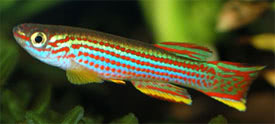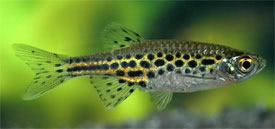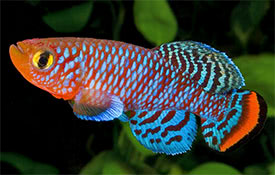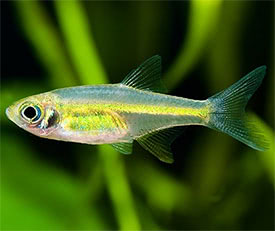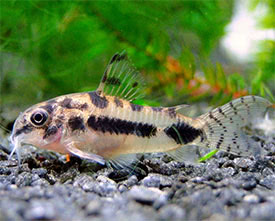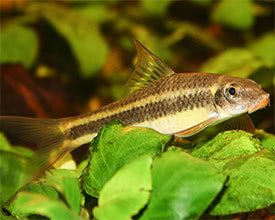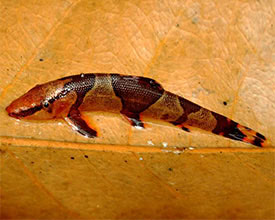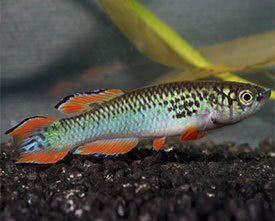
 Magyarul / Hungarian
Magyarul / Hungarian
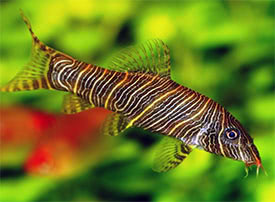
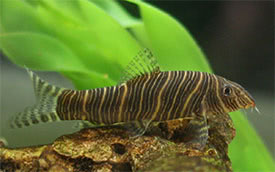
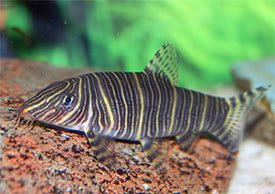

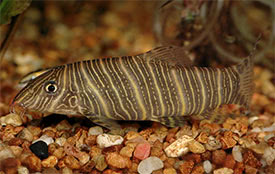
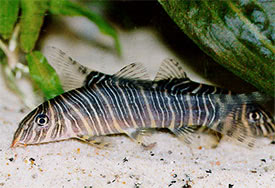

- Scientific name: Botia striata
- Synonyms: Botia striata kolhapurensis (Kalawar & Kelkar, 1956), Botia striatus (Narayan Rao, 1920), Candy-stripe Loach, Striped Loach
- Common name: Zebra Loach
- Group: Loaches
- Distribution: Asia; India, Tunga river
- Size: 8-10 cm
- Biotope: Found in slow to moderate flowing streams and rivers, that usually shaded by the forests canopy.
- Social behavior: Quite peaceful loach that can be housed in a community tank, but can be nippy with long-finned fishes. In a larger aquarium they can be kept with other Botias, or with other not too aggressive fish. A gregarious fish, so they should be kept in a small group of at least 5-6 species.
- Diet: Omnivorous; in nature they are chiefly carnivorous, but they will also eat vegetable matter such as soft-leaved aquatic plants. They aren't unfussy eaters in the aquarium they can be fed with live, frozen foods, and quality dried foods. As other botias they will eat small snails too.
- Breeding: It has not been bred in aquarium.
- Tank: Minimum 120 litres
- Population: 5 fish for 120 litres
- Decoration: Build a densely planted aquarium with lots of rocks and driftwoods that make many hiding places for the fish. Use sand or small gravel as substrate, as they like to dig. The lighting shouldn't be bright. They require well-oxygenated water with a degree of flow.
- Temperature: 21-26 °C
- pH: 6.0-7.5
- Hardness: 1.0-10.0 dGH
- Lifespan: 8-15 years
At first sight Zebra Loach appears to have lots of vertical bands, but basically it has about 7-9 very broad, dark bluish-green or grayish-black bands set on a yellowish green body. The bands have whitish lines inside that are generally straight, but sometimes can be broken or branched. These markings will continue on the fins. The belly is cream colored and free of any stripes or patterns. There are four pairs of barbels by the mouth. The belly area is fairly straight and the back is arched. Young specimens have a red nose that fades as they grow older.
Just below each eye these loaches have a suborbital spine, which can be extended in defence. Fishkeepers need to be aware of this when netting the fish as they can become entangled or inflict a nasty cut if poorly handled.
They are naturally nocturnal fish, hiding under the driftwoods or stone structures during daytime, but will become quite active during the day once they become acclimated. They are very sensitive to different medications that contain copper, that used to treat skin diseases. Zebra Loach can be very hardy under the right conditions. This species is listed on the IUCN Red List as Endangered because it has a very limited range and the species is known from only four fragmented locations. The habitat of the species is severely threatened because of deforestation leading to siltation, recreational activities on the mountain tops and pollution of the hill streams.
http://www.fishbase.org/summary/12255
http://www.seriouslyfish.com/species/botia-striata/
https://www.thespruce.com/zebra-loach-1381072
http://animal-world.com/encyclo/fresh/loaches/ZebraLoach.php
http://www.iucnredlist.org/details/168591/0





























































